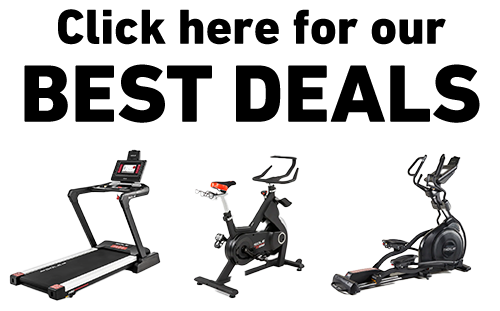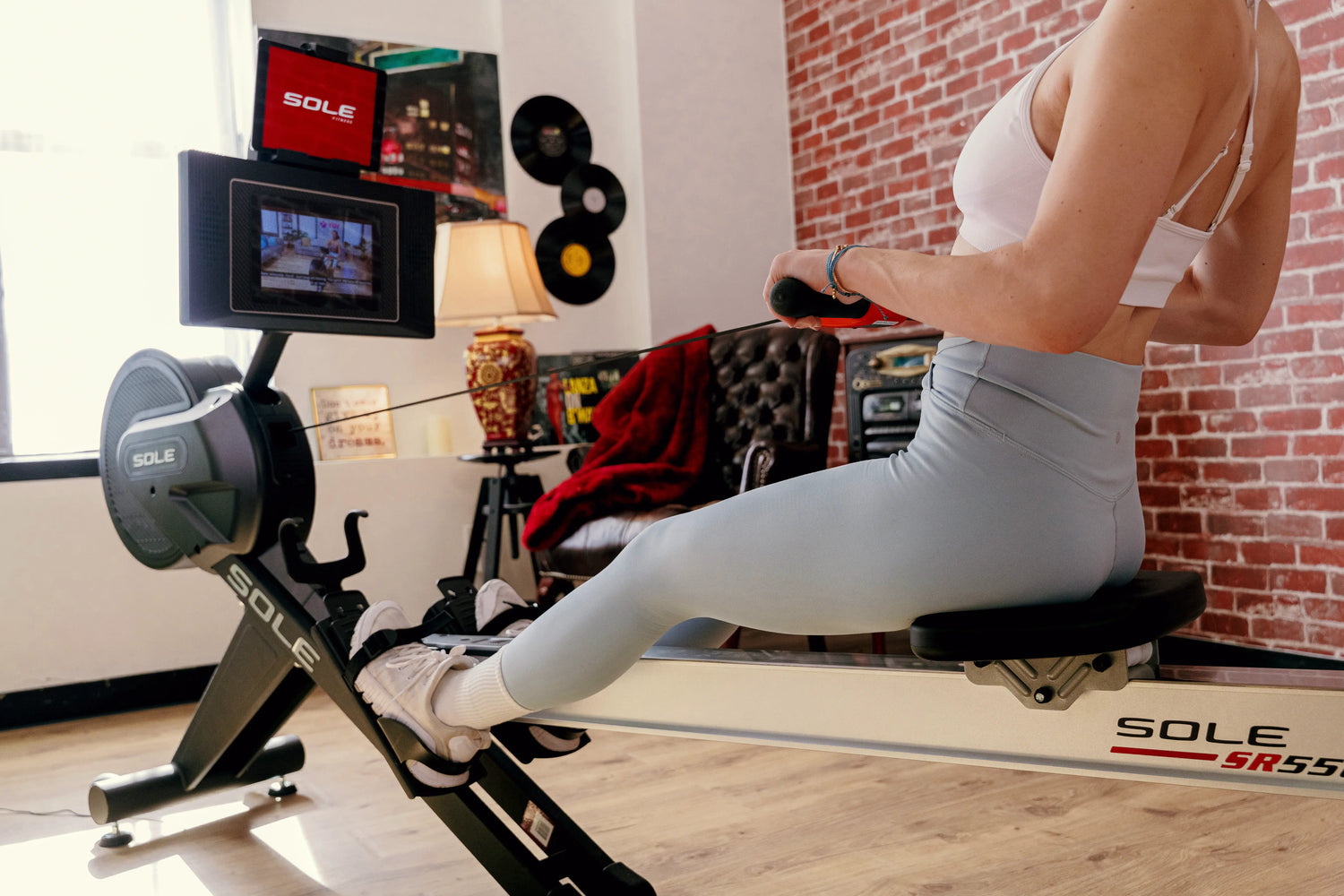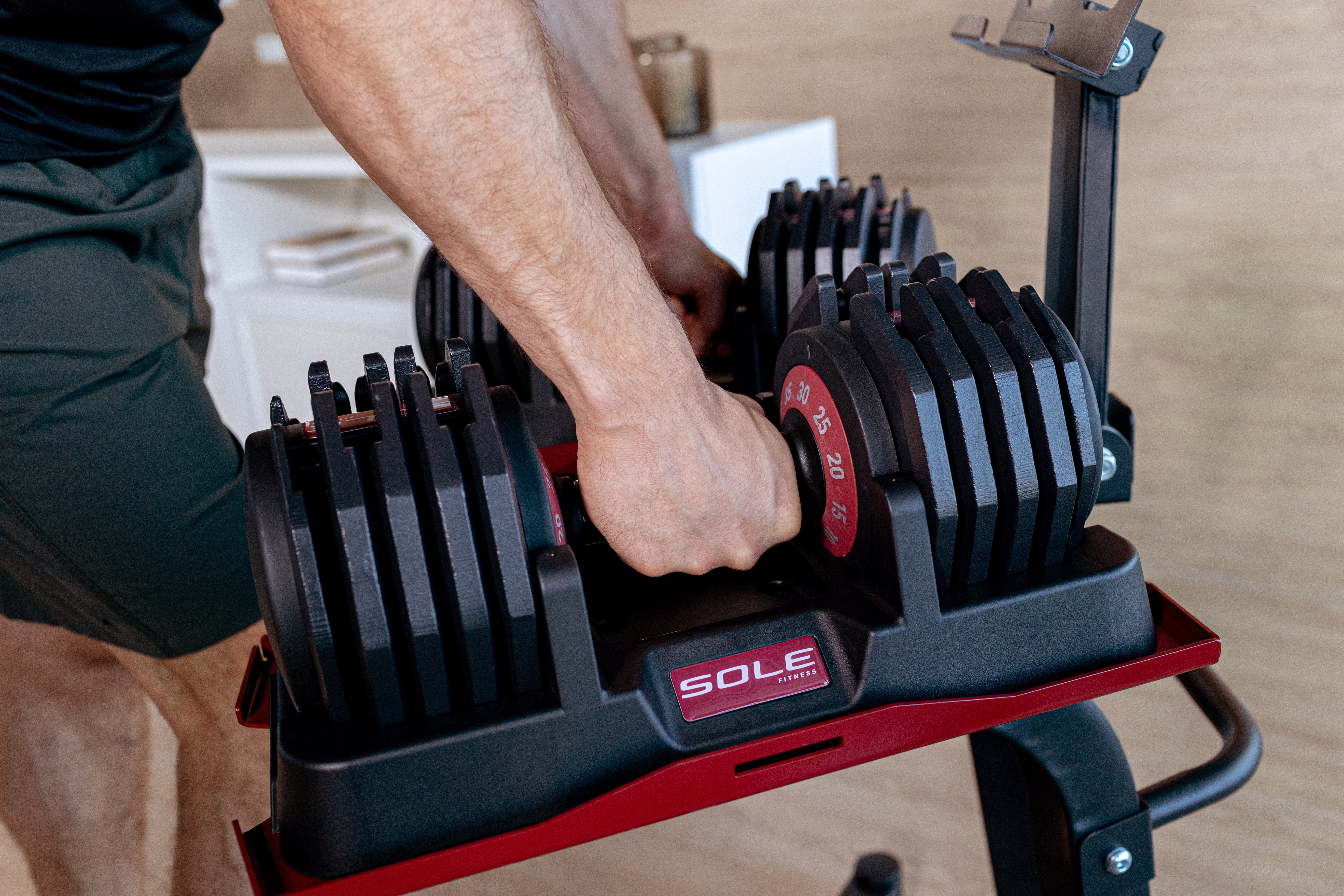Key Takeaways
- Rowing machines engage multiple core muscles simultaneously, making them more effective than isolated ab exercises.
- Proper technique is crucial—your abs should be engaged throughout the entire rowing stroke for maximum benefits.
- The three most effective rowing exercises for abs combine resistance variation, timing elements, and form modifications.
- You can achieve visible abs through consistent rowing workouts combined with proper nutrition and recovery.
- SOLE's SR550 rowing machine enhances core engagement through its dual resistance system and realistic rowing feel.
Why Rowing Machines Are Perfect for Rock-Hard Abs
When sculpting defined abs, most people immediately think of crunches and planks. But one of the most effective ab-building tools is sitting in the cardio section of your gym. The rowing machine, often overlooked and underutilized, could be what you need to get a strong, defined core.
The beauty of rowing lies in its ability to engage multiple muscle groups simultaneously while providing both cardiovascular and strength benefits. Your abs aren't just working in isolation; they're functioning as part of an integrated system, exactly as they're designed to do.
Unlike isolated ab exercises that target specific muscles, rowing engages your entire core as a functional unit. With each stroke, your rectus abdominis (the "six-pack" muscle), transverse abdominis (your deep core stabilizer), and obliques all activate to maintain proper position and transfer power.
|
Rower with Ultimate Full-Body Workout. Get Realistic 'On Water' Sensation!
Experience Next-Level Rowing: SR550’s ultra-smooth air and magnetic resistance creates an authentic rowing experience. Enjoy features like 10.1" touchscreen, built-in apps, screen mirroring, and exclusive wireless handlebar resistance adjustments. Why Choose SOLE SR550: ✓ FREE curbside shipping on every order 30-Day Money-Back Guarantee: Love it or return it, no questions asked. |
The Science Behind Rowing and Core Activation

Rowing activates core musculature at levels comparable to or exceeding traditional ab exercises, with your core serving as both a power transfer center and a stabilizing unit.
How Your Abs Work During Each Phase of the Rowing Stroke
The rowing stroke consists of four distinct phases: catch, drive, finish, and recovery. During the catch position, your core engages to maintain an upright torso while your legs are compressed. As you initiate the drive phase, your abs work to transfer power from your legs through your torso.
The finish position demands strong core stabilization as you lean back slightly, creating that crucial mind-muscle connection with your abdominals.
Finally, during the recovery phase, your core controls the forward lean of your torso, working eccentrically to bring you back to the catch position. This complete cycle ensures your abs are working through various types of contractions, promoting comprehensive development.
Calories Burned vs. Muscle Engagement: What Matters Most
While the calorie-burning potential of rowing is impressive, it's the combination of caloric expenditure and direct muscle engagement that makes it so effective for abdominal development.
A common misconception is that burning calories alone will reveal abs, but without proper muscular development, you're likely to end up with a flat but undefined midsection.
The rowing machine strikes the perfect balance by simultaneously building your abdominal muscles through constant engagement while creating the caloric deficit needed to reduce the fat that might be hiding them.
This dual-action approach is far more efficient than splitting your workout into separate cardio and ab-specific segments.
3 Best Rowing Machine Exercises That Target Your Abs
1. Power 10s: The Sprint-Recovery Method
Power 10s involve performing ten maximum-effort strokes followed by 10–20 seconds of light recovery rowing.
This interval structure creates metabolic stress that promotes both muscle development and fat burning while placing significant demands on your core stabilizers during the power phase.
Power 10s Protocol:
- Row at a moderate pace for 2 minutes to warm up
- Perform 10 maximum-effort strokes with perfect form, focusing on powerful leg drive and core bracing
- Follow with 10–20 seconds of light, recovery rowing
- Repeat 8–10 times, gradually increasing to 12–15 rounds as conditioning improves
- Finish with 2 minutes of cool-down rowing at a relaxed pace
The key to making Power 10s effective for ab development is maintaining rigid core stabilization during the explosive phase.
As you drive with your legs, imagine your abs are made of steel, transferring power from your lower body through your torso.
This exercise is particularly effective because the intensity forces greater recruitment of fast-twitch muscle fibers in your core, which stimulates growth and definition.
2. Core-Focused Rowing With Extended Finish Position
This variation transforms the standard rowing stroke into an abdominal-focused exercise by extending the time spent in the finish position.
As you complete each stroke, lean back slightly (about 15–20 degrees from vertical) and hold this position while maintaining tension through your entire midsection. The isometric contraction during this extended hold directly targets your rectus abdominis and deep transverse abdominis.
Extended Finish Protocol:
- Set damper to medium resistance (4–6 on most machines)
- Perform normal rowing stroke but extend the finish position
- Hold the finish position for 2–3 seconds with core fully engaged
- Slowly return to starting position with controlled core tension
- Maintain steady breathing throughout the extended hold
Start with 5–7 minutes of this extended-hold rowing, aiming for a stroke rate of 18–22 strokes per minute.
The slower pace allows for quality holds and maximum time under tension for your abs. As your core strength improves, gradually extend the holding time at the finish position to 3–4 seconds.
3. Alternating Resistance Intervals

Manipulating resistance levels forces your core to adapt to changing demands, stimulating new muscle fiber recruitment while preventing adaptive plateaus.
This challenging protocol manipulates the resistance setting on your rowing machine to create varying demands on your core stabilizers.
Begin with 2 minutes of rowing at a low resistance setting (2–3), focusing on speed and form. Then immediately increase the resistance to a high level (7–8) and row for 1 minute at a slower, more powerful pace, emphasizing core bracing with each stroke.
The beauty of alternating resistance levels lies in how it forces your core to adapt to changing conditions. During low-resistance intervals, your abs work to maintain posture while handling higher stroke rates.
During high-resistance intervals, your core must generate and transfer significantly more force while maintaining stability. For maximum effectiveness, complete 6–8 rounds of this alternating protocol, totaling 18–24 minutes of work.
Pay particular attention to maintaining proper form as fatigue sets in, as this is when most rowers begin to lose core engagement and rely more on lower back muscles, which reduces abdominal benefits while increasing injury risk.
Perfect Your Form for Maximum Ab Activation

Proper rowing form serves as the foundation for effective abdominal engagement, with your core acting as the central power station connecting upper and lower body movements.
Common Form Mistakes That Rob Your Abs of Results
Even experienced rowers can fall victim to form errors that minimize core engagement. The most detrimental mistake is rounding your back during the stroke, which transfers tension away from your abs and into your spine, thereby increasing injury risk while reducing abdominal stimulation.
Another common error is rushing the recovery phase, which eliminates the eccentric contraction that helps develop your core muscles.
Over-extending at the finish position is equally problematic. While a slight lean back engages your abs, an excessive recline shifts the work to your lower back and hip flexors.
Aim for approximately 15–20 degrees of backward lean to find the sweet spot where your abs are maximally engaged without compromising your lower back.
The Critical Hip Hinge Most Rowers Get Wrong
The hip hinge is perhaps the most technically important movement in rowing—and the one most frequently performed incorrectly.
Rather than bending from the waist (which rounds the back), a proper hip hinge involves pushing your hips backward while maintaining a flat back. This position engages your core stabilizers and protects your spine while setting up the powerful leg drive that initiates the stroke.
Practice the hip hinge movement pattern separately before applying it to your rowing. Stand with your feet shoulder-width apart, place your hands on your hips, and practice pushing your buttocks backward while keeping your chest up and back flat.
This fundamental movement pattern transfers directly to proper rowing form and maximizes abdominal engagement throughout the exercise.
Breathing Techniques That Enhance Core Engagement
Your breathing pattern significantly impacts core activation during rowing. Many beginners breathe chaotically or hold their breath during intense portions of the stroke, both of which reduce abdominal engagement and limit performance.
Instead, synchronize your breathing with your rowing rhythm, exhaling during the drive phase and inhaling during recovery.
For enhanced core activation, incorporate "bracing" during the drive phase. This involves creating intra-abdominal pressure by contracting your core 360 degrees around your spine while maintaining normal breathing.
Think of preparing for someone to lightly tap your stomach—that tension, maintained while still breathing normally, is the sensation you're aiming for during each drive phase.
Transform Your Core Training with SOLE's SR550 Rower

SOLE's SR550 rowing machine combines dual air and magnetic resistance with premium construction, providing the smooth, adjustable resistance needed for precise ab-focused training.
SOLE's SR550 Rowing Machine delivers everything needed for these advanced abdominal exercises. The dual air and magnetic resistance system provides smooth, consistent tension throughout each stroke, which is crucial for maintaining proper form during extended finish holds and resistance intervals.
Unlike basic air rowers that can feel jerky, the SR550's hybrid resistance creates the fluid motion needed for precise core engagement.
The 10.1" touchscreen displays your workout metrics and connects to the SOLE+ App for guided rowing sessions that emphasize proper form and core engagement.
What makes the SR550 ideal for ab-focused training is its precise resistance control. The magnetic system allows exact adjustment for those alternating resistance intervals, while the air component provides the natural feel needed during Power 10s.
The ergonomic seat and handlebar design ensure you maintain proper posture for maximum core activation, while the foldable design saves space when you're not building those abs.
The wireless handlebar resistance adjustments let you change intensity mid-workout without breaking your rhythm—perfect for the resistance interval protocol that challenges your core through varying demands.
Frequently Asked Questions (FAQs)
How often should I do rowing machine exercises for abs?
For optimal abdominal development, incorporate targeted rowing workouts 3-4 times per week with at least one day of recovery between sessions. This frequency provides sufficient stimulus for growth while allowing adequate recovery time for muscle repair and adaptation. Recovery is when actual muscle development occurs—not during the workout itself. If you're new to rowing, start with just twice weekly and gradually increase as your conditioning improves.
Can rowing machine workouts replace traditional ab exercises?
Yes, rowing machine workouts can effectively replace traditional ab exercises for most fitness enthusiasts when performed with proper form and intentional core engagement. Rowing provides functional core development through multi-plane movement patterns that more closely mimic real-world activities compared to isolated exercises like crunches.
How long before I see results in my abs from rowing?
The timeline for visible abdominal results varies based on several factors, but most dedicated rowers begin noticing improved core definition within 4–8 weeks of consistent training. Visible abs are primarily a result of reduced body fat percentage rather than increased muscle size.
Can beginners do these rowing exercises for abs?
Absolutely! Beginners can and should incorporate these rowing exercises into their fitness routines, but with appropriate modifications. Start with shorter durations and fewer intervals while focusing primarily on mastering proper form. The extended finish position exercise is particularly beneficial for beginners as it reinforces correct posture and core engagement at a manageable pace.
Do I need a specific type of rowing machine for these exercises?
While any rowing machine will provide core benefits, the SOLE SR550's dual resistance system offers significant advantages for ab-focused training. The combination of air and magnetic resistance provides smooth, adjustable tension that's ideal for the extended finish holds and resistance intervals described above.
The SR550's wireless resistance controls allow you to adjust intensity mid-workout without breaking rhythm, which is essential for the alternating resistance protocol. The precise resistance control and consistent stroke feel make it superior to basic air rowers for targeted core work, while the foldable design makes it practical for home use.








Leave a comment
This site is protected by hCaptcha and the hCaptcha Privacy Policy and Terms of Service apply.